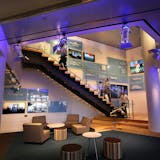Kahina Boukherroub recently got a grant to research declines in turkey fertility, but instead of working at her St. Paul campus, she’ll have to fly to Maryland to complete the animal trials because of the University of Minnesota’s obsolete facilities.
The Poultry Teaching and Research Facility, too hot and poorly ventilated to house turkeys for long periods, is just one example of a larger problem.
University of Minnesota officials say the backlog of repairs needed at crumbling, outdated buildings across its five campuses has reached a crisis point — and they’re asking for $200 million this legislative session just to sustain them.
“This is incredibly important — [facilities are] a recruitment and retention tool,” said Alice Roberts-Davis, the U’s vice president of university services. “My biggest concern is that when we don’t offer the facilities that people are looking for … they leave the state and then they stay there.”
The U’s system encompasses about 30 million square feet of space, spread across 1,000 buildings; a quarter are in poor or critical condition. Officials plan to ask for money in 2025 to repair about 80 buildings, 50 of them on the Twin Cities campus, though buildings on the Morris campus are in the poorest condition. The funding is in addition to the U’s annual operating budget request, which totals $741 million this year, plus a $235 million recurring increase by the end of the biennium.
This type of support, called Higher Education Asset Preservation and Replacement (HEAPR) funding, is sought every year, Roberts-Davis said, but capital funding has been received in just five of the past 10 years.
Last year, the U took a “bold new approach” and asked for $500 million in such funding, which can only be used for infrastructure like exterior repairs, new roofs and HVAC upgrades, she said. But the Legislature didn’t pass a bonding bill, leaving the university and many others empty-handed.
“They don’t seem to have a plan to invest,” said Roberts-Davis of the Legislature. ”I don’t know what the end game is. What happens to these buildings at the end of the day?”



